 |
||||||||||||||||||||||||
|
Daily Web Coverage: Monday Tuesday Wednesday Thursday Friday |
||||||||||||||||||||||||
 |
Eighteenth Meeting of the Animals Committee |
|||||||||||||||||||||||
|
San José, Costa Rica, 8-12 April 2002 |
||||||||||||||||||||||||
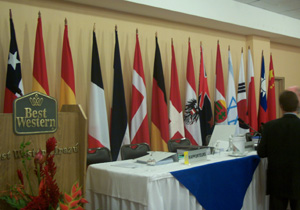 |
OPENING OF THE MEETING: | |||||||||||||||||||||||
![]() Listen to
Zayda Trejos Esquivel
Listen to
Zayda Trejos Esquivel
Marinus Hoogmoed, the Netherlands, Chair of the Animals Committee, said that although the events of September 11 might have changed the world, it did not change the determination for people to care for nature and animal species. He highlighted several important issues to be discussed, inter alia, freshwater turtles, sharks, corals, sturgeon, and review of significant trade, and the need to finalize matters before the twelfth Conference of the Parties (COP-12). He noted, however, a weakness of the significant trade review process, particularly in collaborating with the Plants Committee, and hoped the matter would be settled at COP-12
Organizational
Matters:
Chair Hoogmoed introduced, and participants adopted, the Rules of Procedure, the Agenda and the Working Programme. Responding to a request by Mexico for a detailed list of interventions, the Secretariat said that due to budgetary and human resource constraints, only a summary meeting record will be issued
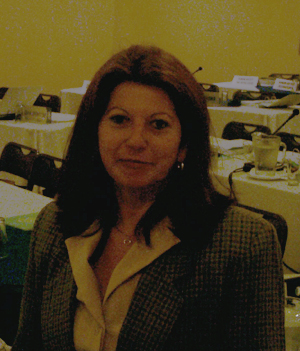
Review
of Significant Trade – Resolution 8.9 (Rev.):
This item was discussed on Monday, 8 April in Plenary. Chair Hoogmoed introduced Progress on the Implementation of the Review of Significant Trade, noting that the document was prepared by TRAFFIC and IUCN. The document is divided into two sections,
Acipenseriformes (sturgeon) and freshwater turtles
Zayda Trejos Esquivel, General Director of the Costa Rican Ministry of Environment and Energy's National System of Conservation Areas
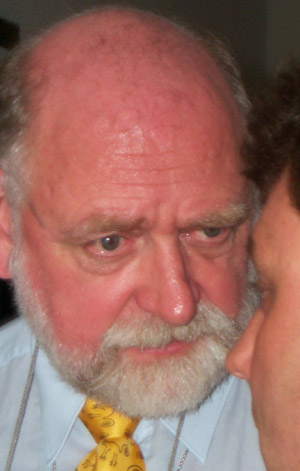
Acipenseriformes:
Acipenser
oxyrinchus: TRAFFIC stated that Atlantic sturgeon (Acipenser
oxyrinchus) has been reduced from historical levels due to reduction in spawning grounds, habitat alteration and by-catch. He outlined Canadian and American legislation governing the species, and expressed concern about inconsistency in data received from both countries. He advised that the species be placed in Category 2. The US said it was looking into data discrepancies. Canada explained that fisheries for this species are decreasing because permits are not being renewed, and that the Canadian federal and provincial governments are working on this issue in a newly formalized working group. Switzerland enquired about steps taken to increase the species' spawning grounds
Acipenser
persicus:
TRAFFIC introduced documentation on Persian sturgeon
(Acipenser persicus), recommending it for consideration under Category 1 or 2. He noted the difficulty in distinguishing Persian from Russian sturgeon
(Acipenser gueldenstaedetii). Iran noted that Russian and Persian sturgeon are distinguishable even by local fishermen based on morphology, and that all catch data and information on the two species are recorded separately by Iran. He also highlighted Iran's restocking program for A.
persicus, and called for placing the species in Category 3. The Russian Federation expressed support for the A.
persicus management efforts by Iran
Marinus Hoogmoed, the Netherlands, Chair of the Animals Committee
Acipenser transmontanus:
TRAFFIC explained that: the harvest of white sturgeon
(Acipenser transmontanus), which is native to the Pacific coast of North America, is prohibited in Canada and banned or closely regulated in the United States; commercial harvests have increased since 1991, originating mainly from aquaculture rather than the wild; and caviar is the predominant export, although the main market is domestic. He recommended white sturgeon be placed in Category 3. Iran enquired if it is possible to differentiate wild from aquaculture stock, and TRAFFIC responded that categorization is based on documentation accompanying shipments. Switzerland noted A.
transmontanus aquaculture efforts in Italy
Scaphirhynchus
platorynchus:
TRAFFIC introduced shovelnose sturgeon (Scaphirhynchus
platorynchus), noting that many states in the US have not required reporting of catch, thus making it difficult to get an accurate sense of the domestic market and trade. He added that if the US intends to hold off on commercial export, the species would be recommended for Category 3, otherwise, it would be recommended for inclusion in Category 1 or 2

Alison Rosser, IUCN
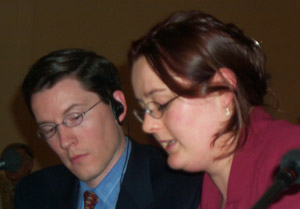
Freshwater turtles: Cuora amboinensis:
The IUCN introduced the South Asian box turtle (Cuora
amboinensis), noting that the species may be declining due to over-exploitation. She stressed lack of available information on population monitoring, habitat conservation measures and management, as well as a lack of legislation and enforcement implementation. She recommended that the species be included in Category 1. Chair Hoogmoed said this species, and the amount of specimens being exported, was recently discussed at a freshwater turtle meeting in, Kunming, China
Cuora flavomarginata:
The IUCN explained that although there are no population estimates for the yellow-margined box turtle
(Cuora flavomarginata), it is thought to have declined in all range States. She cited habitat degradation and loss, collection for international trade, and inadequate legislation and enforcement as problems, and recommended that the species be listed under Category 1 or 2. The Secretariat responded that a working group will address the issue, as there is too little information to place the species in any category. The IUCN stressed that despite little reported trade, any additional trade data would necessitate non-detriment findings to preclude categorization
Cuora
galbinifrons:
The IUCN said the primary threat to the Indochinese box turtle
(Cuora galbinifrons) is from harvesting throughout its range States, despite occurring in a number of protected areas. She recommended that the species be placed in Category 1
Lissemys punctata:
The IUCN reported that the Indian flapshell turtle (Lissemys
punctata) was placed in Appendix 2 in 1995, and that its main threat is habitat degradation and collection for domestic consumption and export. She said significant domestic use, which endangers sustainability of harvesting, is the basis for the recommendation that this species be placed in Category 2
Pyxis planicauda:
The IUCN reported on the flat-tailed spider tortoise
(Pyxis planicauda), recommending it for inclusion in Category 1. She said export data is incomplete and established quotas have varied greatly and been exceeded in recent years. The US shared trade data that
Pyxis planicauda and Pyxis arachnoidae imports were larger than indicated in the IUCN report. A representative of the David Shepherd Conservation Foundation added information from her analysis conducted on behalf of the International Fund for Animal Welfare (IFAW), of export permits on file in Madagascar, showing that the export quota had been exceeded in 2000 and 2001
Other matters:
Chair Hoogmoed noted the need to revisit the categorization of several species of sturgeon, musk deer and cobra, which were not evaluated at previous meetings
Craig Hoover with Angela Barden, TRAFFIC
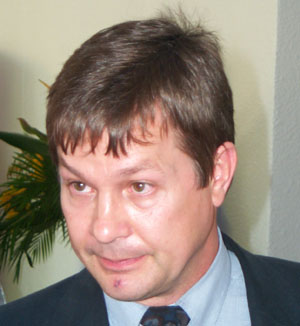
Malan Lindeque, Chief, Scientific Support Unit, CITES Secretariat
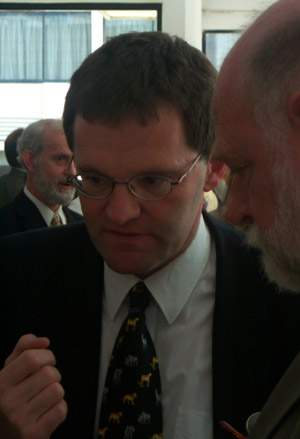
Revision of Resolution 8.9 (Rev.) and decision 11.106 - 11.108: The CITES Secretariat introduced proposed revisions to Resolution Conf. 8.9 (Rev.) and Decisions 11.106 – 11.108, the process for significant trade review (AC18/Doc 7.3), to simplify and consolidate its implementation and clarify responsibilities. Oceania supported the creation of a working group. The US, with Mexico, India and Israel, called for adequate time for document review. He questioned proposals regarding removal or redefinition of Categories 1 and 2 and primary and secondary recommendations. Mexico supported facilitation and simplification of the way significant trade recommendations are handled. India, the US Humane Society, and IFAW underlined the importance of imposing timeframes, and the International Wildlife Coalition (IWC) supported coordination with scheduling of Conferences of the Parties. The David Shephard Conservation Foundation emphasized the use of trade suspensions as a tool for non-compliance. TRAFFIC requested that the Resolution 8.9 (Rev.) working group consider the necessity of a high-level review after COP-12. The Secretariat responded at length, noting that this first revision is a starting point from a current limited and inflexible system, and that the effectiveness of the significant trade review correlates to available funding and the number of species under consideration. He urged harmonized legislation and reporting on a regional level. The Chair established a working group on this issue
Tom De Meulenaer, Scientific Officer (Fauna)

Review
of the Implementation of Recommendations:
The Secretariat said it would continue to review recommendations that have been formulated as part of the significant trade review process and is working on a comprehensive database of all listed species and their recommendations. He said the database should be made available by the next meeting of the Animal Committee
Significant
Trade Field Projects for Animals:
A representative of the CITES Secretariat explained that in July 1992, the Animals Committee adopted guidelines for development and assessment of trade field projects for animals and that when the Secretariat was looking over the guidelines, questioned their current validity. Suggesting that some sections of the guidelines may be relevant, and asked participants if they should be maintained. Chair Hoogmoed added that no field projects had been initiated by the Animals Committee. Switzerland objected to abolishing the guidelines, the IWC stressed the importance of peer review in projects, and the Ornamental Aquatic Trade Organization emphasized clearing-house mechanisms to promote information flow. The IUCN said that in her organization's experience, the guidelines have not been useful. The Species Survival Network said an operations manual would be helpful, and Safari Club International said the guidelines need to be modified. The Committee decided to discuss this matter in the working group on Resolution 8.9 (Rev.)
Ronald Orenstein, IWC
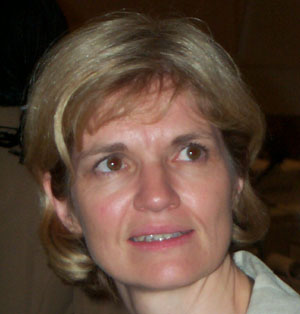
Rosalind Reeve, David Shepherd Conservation Foundation
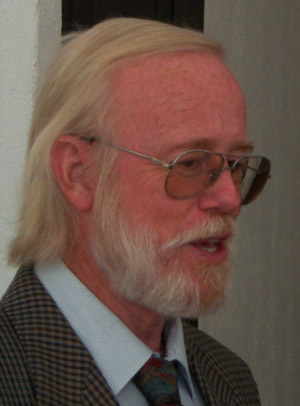
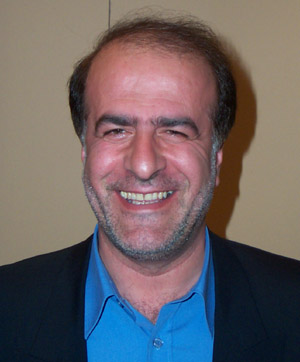
Mohammad Pourkazemi, Iran
Michael Griffin, Regional Representative, Africa
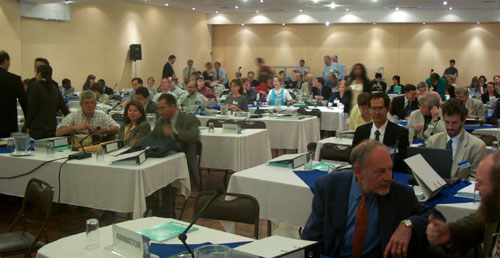
Participants in the Plenary
|
Links: ENB coverage of The Eleventh Conference of the Parties (COP-11) |